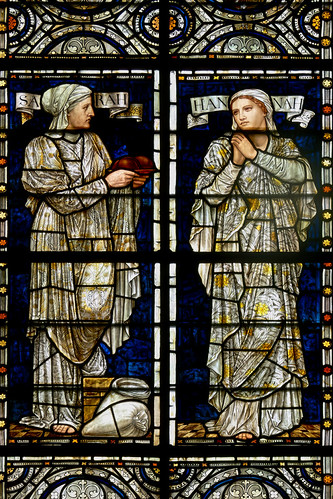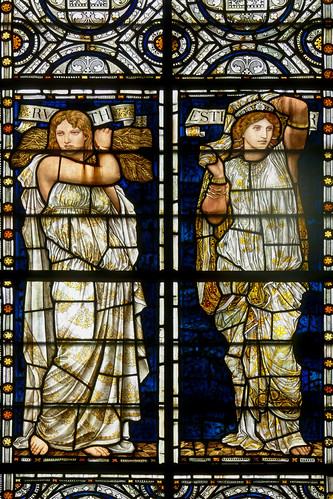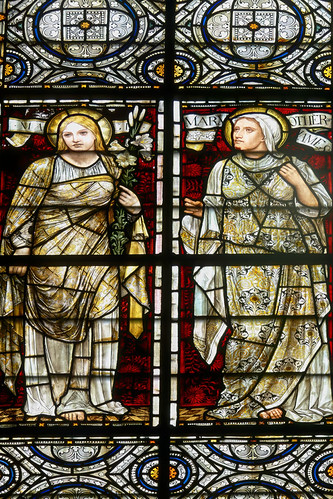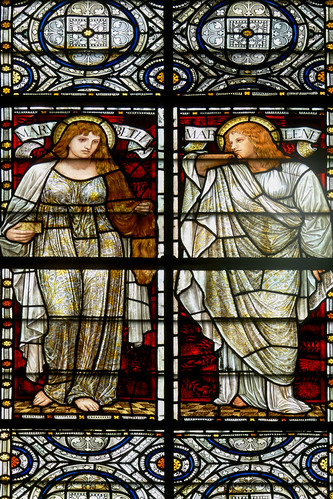Faith, Devotion, and Courage: The Biblical Women of Henry Holiday
The four stained glass panels designed by Henry Holiday and made by James Powell & Sons (Whitefriars Glass) in 1891 form one of the most refined and spiritually resonant decorative ensembles in Salisbury Cathedral. Conceived as a unified series, they portray eight women of Scripture, Sarah and Hannah, Mary the Virgin and Mary the Mother of James, Mary of Bethany and Mary Magdalene, and Ruth and Esther, each pair chosen to express a distinct yet harmonizing aspect of faith, devotion, and divine purpose.
Unity of Design
Across all four windows, Holiday’s design vocabulary is consistent and deliberate. Each pair of figures is placed beneath rich Gothic canopies framed with geometric ornament, while their luminous robes are patterned with delicate gold and ivory floral motifs. The alternating blue and red backgrounds lend rhythm and contrast throughout the series, symbolizing the interplay of contemplation and action, sacrifice and redemption. The graceful poses, naturalistic faces, and subtle emotional depth are quintessential Holiday, merging Pre-Raphaelite idealism with the quiet dignity of the Arts and Crafts movement.
Spiritual Themes
Each pair is thematically balanced to explore complementary virtues:


-
Sarah and Hannah embody faith and fulfilment, women who prayed, waited, and trusted in God’s promise of new life.
-
Ruth and Esther stand for loyalty and courage, Ruth’s steadfast love and Esther’s brave intercession for her people.


-
Mary the Virgin and Mary the Mother of James represent devotion and discipleship, the mother of the Savior and one of His faithful followers.
-
Mary of Bethany and Mary Magdalene reflect love and transformation, Mary of Bethany’s contemplative worship and Mary Magdalene’s witness to the Resurrection.
Together, these eight figures trace a continuum of womanly virtue from the Old Testament to the New, each one an instrument of faith, compassion, and moral strength within her own time.
Artistic and Theological Synthesis
Holiday’s collaboration with Powell & Sons in these windows represents the high point of Victorian ecclesiastical glass. The painterly modeling of the faces, the sensitive treatment of drapery, and the controlled palette of white, gold, red, and blue create a harmonious visual theology, one that celebrates holiness not through grandeur but through inward grace. The figures are neither remote nor sentimental; they are human and contemplative, embodying the ideal of sanctity as quiet steadfastness.
Overall Impression
Viewed together, the four windows form a visual litany of faith, spanning generations of biblical history yet unified by a single artistic and devotional vision. In them, Henry Holiday and the craftsmen of Powell & Sons achieved a rare balance of beauty, intellect, and reverence, a series that stands as both a masterpiece of stained glass design and a testament to the enduring spiritual power of sacred art in the late nineteenth century.
